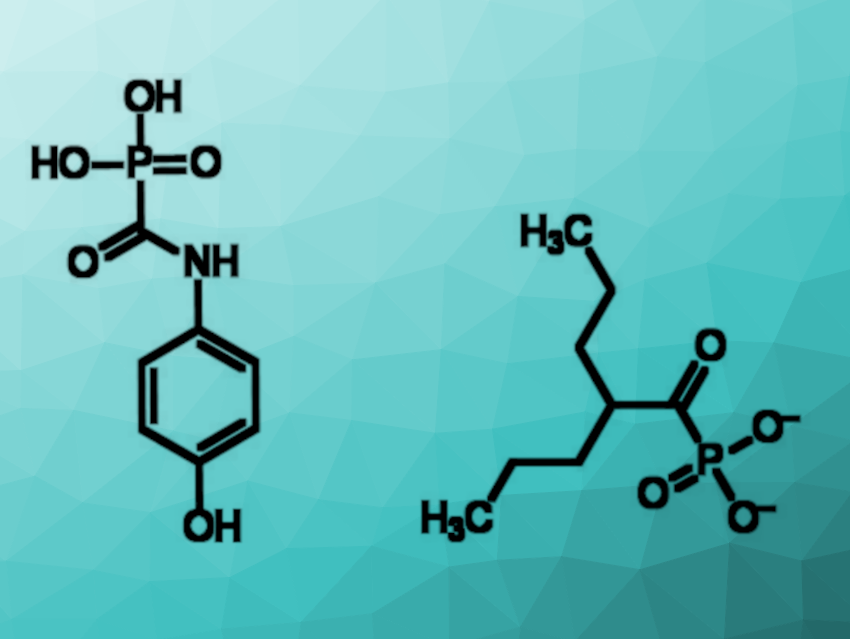Paracetamol and valproic acid are drugs that have been used successfully for decades. Paracetamol was introduced in 1950 as a mild analgesic medication. It is generally safe and belongs to the most frequently used drugs. However, an overdose can cause fatal liver damage. Several analogues have been studied, but none provided positive results. Valproic acid was introduced in 1967 as an antiepileptic drug. It has also been used for migraine prophylaxis and bipolar disorder. However, the use of valproic acid is complicated by teratogenicity (i.e., harmful effects on a developing fetus). Finding improved analogues of these drugs without these side effects would be useful.
Péter Erdélyi, Gedeon Richter Plc., Budapest, Hungary, and colleagues have prepared a phosphonate derivative of paracetamol (pictured on the left) in which the methyl group of paracetamol is replaced by a phosphate moiety. The derivative, N-(4-hydroxyphenylcarbamoyl)phosphonic acid, was synthesized from 4-(benzyloxy)aniline, which was reacted with 4-nitrophenyl(diethoxyphosphoryl)formate, followed by removal of the benzyl group and the ethyl ester groups. This phosphonate derivative is about fourfold more potent than paracetamol as an analgesic, and could, therefore, serve as a lead compound for research into new drugs.
The team also synthesized a phosphonate derivative of valproic acid (anion pictured on the right), where the hydroxy group of valproic acid is replaced by a phosphate moiety. The target compound was prepared in four steps from valproic acid. First valproic acid was converted to 2-propylpentanoyl chloride using oxalyl chloride, followed by a reaction with triethyl phosphite. The ethyl ester groups were removed and the resulting product was converted to its piperazine salt to obtain a solid product. Interestingly, this derivative is more active as an anticonvulsant agent than valproic acid, making it a suitable candidate for further drug research against epilepsy and other central nervous system diseases.
- Phosphonate Derivatives of Paracetamol and Valproic Acid,
Renáta Ballók, Ágnes Kis Varga, Péter Erdélyi, János Fischer,
ChemMedChem 2022.
https://doi.org/10.1002/cmdc.202200526




